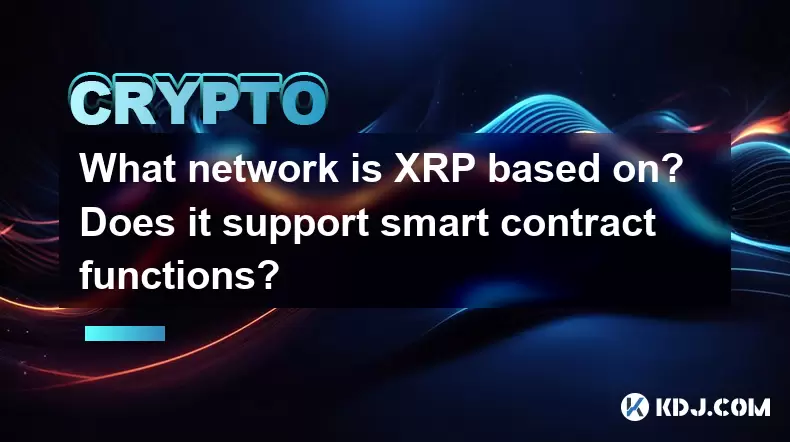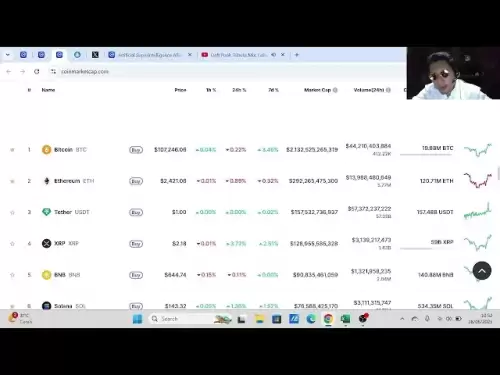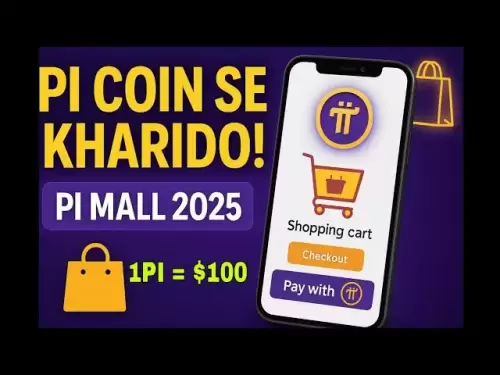-
 Bitcoin
Bitcoin $107,360.0175
0.36% -
 Ethereum
Ethereum $2,425.2303
-1.15% -
 Tether USDt
Tether USDt $1.0003
-0.01% -
 XRP
XRP $2.1850
4.33% -
 BNB
BNB $646.4128
0.37% -
 Solana
Solana $146.0511
2.89% -
 USDC
USDC $0.9998
-0.01% -
 TRON
TRON $0.2754
1.55% -
 Dogecoin
Dogecoin $0.1626
0.80% -
 Cardano
Cardano $0.5599
0.49% -
 Hyperliquid
Hyperliquid $37.2026
0.62% -
 Bitcoin Cash
Bitcoin Cash $499.0346
0.17% -
 Sui
Sui $2.7251
2.86% -
 Chainlink
Chainlink $13.1187
-0.19% -
 UNUS SED LEO
UNUS SED LEO $9.0747
0.54% -
 Avalanche
Avalanche $17.6526
0.87% -
 Stellar
Stellar $0.2373
1.02% -
 Toncoin
Toncoin $2.8387
0.25% -
 Shiba Inu
Shiba Inu $0.0...01136
1.04% -
 Litecoin
Litecoin $85.2460
1.04% -
 Hedera
Hedera $0.1473
2.04% -
 Monero
Monero $314.3978
1.56% -
 Bitget Token
Bitget Token $4.6799
0.81% -
 Dai
Dai $1.0001
0.02% -
 Polkadot
Polkadot $3.3403
0.70% -
 Ethena USDe
Ethena USDe $1.0002
0.02% -
 Uniswap
Uniswap $6.9908
0.77% -
 Pi
Pi $0.5310
-3.57% -
 Pepe
Pepe $0.0...09292
-0.19% -
 Aave
Aave $254.8721
-2.23%
What network is XRP based on? Does it support smart contract functions?
XRP, used on RippleNet for fast, low-cost international transfers, runs on the XRP Ledger, which uses a unique consensus protocol and has limited smart contract support.
May 12, 2025 at 01:56 pm

XRP, often referred to as Ripple, is a cryptocurrency that operates on the RippleNet platform. RippleNet is a global payment network designed to facilitate fast and low-cost international money transfers. Unlike many other cryptocurrencies, XRP does not run on a traditional blockchain but on a unique distributed ledger technology called the XRP Ledger. This article will delve into the specifics of the XRP network, its underlying technology, and whether it supports smart contract functions.
The XRP Ledger: Understanding the Technology
The XRP Ledger is a decentralized cryptographic ledger powered by a network of peer-to-peer servers. It uses a consensus protocol that allows for fast transaction times and low fees. The XRP Ledger is designed to handle thousands of transactions per second, making it highly efficient for cross-border payments. Unlike Bitcoin's Proof of Work or Ethereum's Proof of Stake, the XRP Ledger uses a consensus protocol known as the Ripple Protocol consensus algorithm (RPCA). This method allows validators to agree on the order and outcome of transactions, ensuring the integrity of the ledger without the need for mining.
RippleNet: The Global Payment Network
RippleNet is the overarching payment network that utilizes the XRP Ledger to facilitate international transactions. It connects banks, payment providers, and digital asset exchanges, enabling them to send and receive money globally in real-time. RippleNet aims to reduce the cost and time associated with traditional banking systems by leveraging the XRP Ledger's capabilities. The network supports various payment solutions, including On-Demand Liquidity (ODL), which uses XRP as a bridge currency to move funds between different currencies quickly and efficiently.
Does XRP Support Smart Contract Functions?
While the XRP Ledger is primarily designed for payment processing, it does have some limited support for smart contract functionality. The XRP Ledger includes a feature called Escrow, which allows users to lock up XRP for a specified period or until certain conditions are met. This can be considered a basic form of a smart contract. Additionally, the Payment Channels feature enables users to create a channel for multiple payments, which can be useful for microtransactions and other scenarios where a series of transactions needs to be processed.
However, the XRP Ledger does not support the full range of smart contract functionalities found on platforms like Ethereum. It lacks the ability to execute complex scripts or decentralized applications (dApps) that are common on other blockchains. The focus of the XRP Ledger remains on optimizing payment processing rather than expanding into the broader smart contract ecosystem.
How to Use XRP for Transactions
Using XRP for transactions involves several steps, which can be outlined as follows:
- Setting Up a Wallet: To start using XRP, you need to set up a wallet that supports the cryptocurrency. Popular options include the official Ripple Wallet or third-party wallets like Toast Wallet and Exodus.
- Acquiring XRP: You can purchase XRP on various cryptocurrency exchanges such as Binance, Coinbase, or Kraken. Once you have an account on an exchange, you can deposit funds and buy XRP.
- Sending XRP: To send XRP, you need the recipient's XRP address. Open your wallet, enter the recipient's address, specify the amount of XRP you want to send, and confirm the transaction. The transaction will be processed on the XRP Ledger and typically takes just a few seconds to complete.
- Receiving XRP: To receive XRP, you need to provide your XRP address to the sender. Once the sender initiates the transaction, the XRP will be credited to your wallet once the transaction is confirmed on the XRP Ledger.
XRP's Role in Cross-Border Payments
XRP plays a crucial role in facilitating cross-border payments through RippleNet. By using XRP as a bridge currency, financial institutions can bypass the traditional correspondent banking system, which often involves multiple intermediaries and can take days to complete. With XRP, transactions can be settled in seconds, significantly reducing both the time and cost of international transfers. This has made XRP an attractive option for banks and payment providers looking to improve their cross-border payment services.
The Consensus Protocol: How Transactions are Validated
The Ripple Protocol consensus algorithm (RPCA) used by the XRP Ledger is a unique approach to achieving consensus among network participants. Here's how it works:
- Validators: A group of trusted nodes, known as validators, are responsible for proposing and voting on the order of transactions.
- Proposals: Each validator collects transactions from the network and proposes a list of transactions to be included in the next ledger version.
- Voting: Validators vote on the proposals they receive. If a supermajority (typically 80%) of validators agree on a set of transactions, those transactions are considered valid and are added to the ledger.
- Ledger Closure: Once the consensus is reached, the ledger is updated, and the process starts again for the next set of transactions.
This consensus mechanism allows the XRP Ledger to process transactions quickly and securely without the need for energy-intensive mining.
Frequently Asked Questions
Q: Can XRP be used for purposes other than cross-border payments?
A: While XRP is primarily designed for cross-border payments, it can also be used for other purposes such as remittances, liquidity provision, and as a bridge currency in decentralized finance (DeFi) applications. However, its use cases are more limited compared to cryptocurrencies that support full smart contract functionality.
Q: How does the cost of XRP transactions compare to traditional banking fees?
A: XRP transactions typically incur very low fees, often just a fraction of a cent. This is significantly lower than the fees charged by traditional banks for international transfers, which can range from 1% to 5% of the transaction amount, plus additional charges for currency conversion.
Q: Is XRP considered a security by regulatory bodies?
A: The classification of XRP as a security has been a subject of debate. In the United States, the Securities and Exchange Commission (SEC) has taken legal action against Ripple Labs, alleging that XRP is a security. However, the final determination on this matter is still pending, and XRP's status can vary depending on the jurisdiction.
Q: Can XRP be mined like Bitcoin?
A: No, XRP cannot be mined. Unlike Bitcoin, which uses a Proof of Work consensus mechanism that involves mining, XRP uses the Ripple Protocol consensus algorithm. XRP was pre-mined, meaning all 100 billion XRP were created at the launch of the XRP Ledger.
Disclaimer:info@kdj.com
The information provided is not trading advice. kdj.com does not assume any responsibility for any investments made based on the information provided in this article. Cryptocurrencies are highly volatile and it is highly recommended that you invest with caution after thorough research!
If you believe that the content used on this website infringes your copyright, please contact us immediately (info@kdj.com) and we will delete it promptly.
- Across Crypto Project Faces Heat: Secret $23M Transfer Sparks Governance Debate
- 2025-06-28 16:30:13
- Trump Coin's Wild Ride: Liquidity Drain, Exchange Deposits, and What It Means for Binance & OKX
- 2025-06-28 16:50:13
- Trump, Memecoin Mania, and Whale Watching: A New York Minute in Crypto
- 2025-06-28 16:30:13
- Shiba Inu, Lending Coins, and Early Holders: A New Frontier
- 2025-06-28 16:51:59
- Meme Coins in July 2025: Investing in the Future of Hype?
- 2025-06-28 16:51:59
- SUI's Trending Surge: Decoding the Reasons Behind the Hype
- 2025-06-28 16:55:12
Related knowledge

How to customize USDT TRC20 mining fees? Flexible adjustment tutorial
Jun 13,2025 at 01:42am
Understanding USDT TRC20 Mining FeesMining fees on the TRON (TRC20) network are essential for processing transactions. Unlike Bitcoin or Ethereum, where miners directly validate transactions, TRON uses a delegated proof-of-stake (DPoS) mechanism. However, users still need to pay bandwidth and energy fees, which are collectively referred to as 'mining fe...

USDT TRC20 transaction is stuck? Solution summary
Jun 14,2025 at 11:15pm
Understanding USDT TRC20 TransactionsWhen users mention that a USDT TRC20 transaction is stuck, they typically refer to a situation where the transfer of Tether (USDT) on the TRON blockchain has not been confirmed for an extended period. This issue may arise due to various reasons such as network congestion, insufficient transaction fees, or wallet-rela...

How to cancel USDT TRC20 unconfirmed transactions? Operation guide
Jun 13,2025 at 11:01pm
Understanding USDT TRC20 Unconfirmed TransactionsWhen dealing with USDT TRC20 transactions, it’s crucial to understand what an unconfirmed transaction means. An unconfirmed transaction is one that has been broadcasted to the blockchain network but hasn’t yet been included in a block. This typically occurs due to low transaction fees or network congestio...

How to check USDT TRC20 balance? Introduction to multiple query methods
Jun 21,2025 at 02:42am
Understanding USDT TRC20 and Its ImportanceUSDT (Tether) is one of the most widely used stablecoins in the cryptocurrency market. It exists on multiple blockchain networks, including TRC20, which operates on the Tron (TRX) network. Checking your USDT TRC20 balance accurately is crucial for users who hold or transact with this asset. Whether you're sendi...

What to do if USDT TRC20 transfers are congested? Speed up trading skills
Jun 13,2025 at 09:56am
Understanding USDT TRC20 Transfer CongestionWhen transferring USDT TRC20, users may occasionally experience delays or congestion. This typically occurs due to network overload on the TRON blockchain, which hosts the TRC20 version of Tether. Unlike the ERC20 variant (which runs on Ethereum), TRC20 transactions are generally faster and cheaper, but during...

The relationship between USDT TRC20 and TRON chain: technical background analysis
Jun 12,2025 at 01:28pm
What is USDT TRC20?USDT TRC20 refers to the Tether (USDT) token issued on the TRON blockchain using the TRC-20 standard. Unlike the more commonly known ERC-20 version of USDT (which runs on Ethereum), the TRC-20 variant leverages the TRON network's infrastructure for faster and cheaper transactions. The emergence of this version came as part of Tether’s...

How to customize USDT TRC20 mining fees? Flexible adjustment tutorial
Jun 13,2025 at 01:42am
Understanding USDT TRC20 Mining FeesMining fees on the TRON (TRC20) network are essential for processing transactions. Unlike Bitcoin or Ethereum, where miners directly validate transactions, TRON uses a delegated proof-of-stake (DPoS) mechanism. However, users still need to pay bandwidth and energy fees, which are collectively referred to as 'mining fe...

USDT TRC20 transaction is stuck? Solution summary
Jun 14,2025 at 11:15pm
Understanding USDT TRC20 TransactionsWhen users mention that a USDT TRC20 transaction is stuck, they typically refer to a situation where the transfer of Tether (USDT) on the TRON blockchain has not been confirmed for an extended period. This issue may arise due to various reasons such as network congestion, insufficient transaction fees, or wallet-rela...

How to cancel USDT TRC20 unconfirmed transactions? Operation guide
Jun 13,2025 at 11:01pm
Understanding USDT TRC20 Unconfirmed TransactionsWhen dealing with USDT TRC20 transactions, it’s crucial to understand what an unconfirmed transaction means. An unconfirmed transaction is one that has been broadcasted to the blockchain network but hasn’t yet been included in a block. This typically occurs due to low transaction fees or network congestio...

How to check USDT TRC20 balance? Introduction to multiple query methods
Jun 21,2025 at 02:42am
Understanding USDT TRC20 and Its ImportanceUSDT (Tether) is one of the most widely used stablecoins in the cryptocurrency market. It exists on multiple blockchain networks, including TRC20, which operates on the Tron (TRX) network. Checking your USDT TRC20 balance accurately is crucial for users who hold or transact with this asset. Whether you're sendi...

What to do if USDT TRC20 transfers are congested? Speed up trading skills
Jun 13,2025 at 09:56am
Understanding USDT TRC20 Transfer CongestionWhen transferring USDT TRC20, users may occasionally experience delays or congestion. This typically occurs due to network overload on the TRON blockchain, which hosts the TRC20 version of Tether. Unlike the ERC20 variant (which runs on Ethereum), TRC20 transactions are generally faster and cheaper, but during...

The relationship between USDT TRC20 and TRON chain: technical background analysis
Jun 12,2025 at 01:28pm
What is USDT TRC20?USDT TRC20 refers to the Tether (USDT) token issued on the TRON blockchain using the TRC-20 standard. Unlike the more commonly known ERC-20 version of USDT (which runs on Ethereum), the TRC-20 variant leverages the TRON network's infrastructure for faster and cheaper transactions. The emergence of this version came as part of Tether’s...
See all articles
























































































